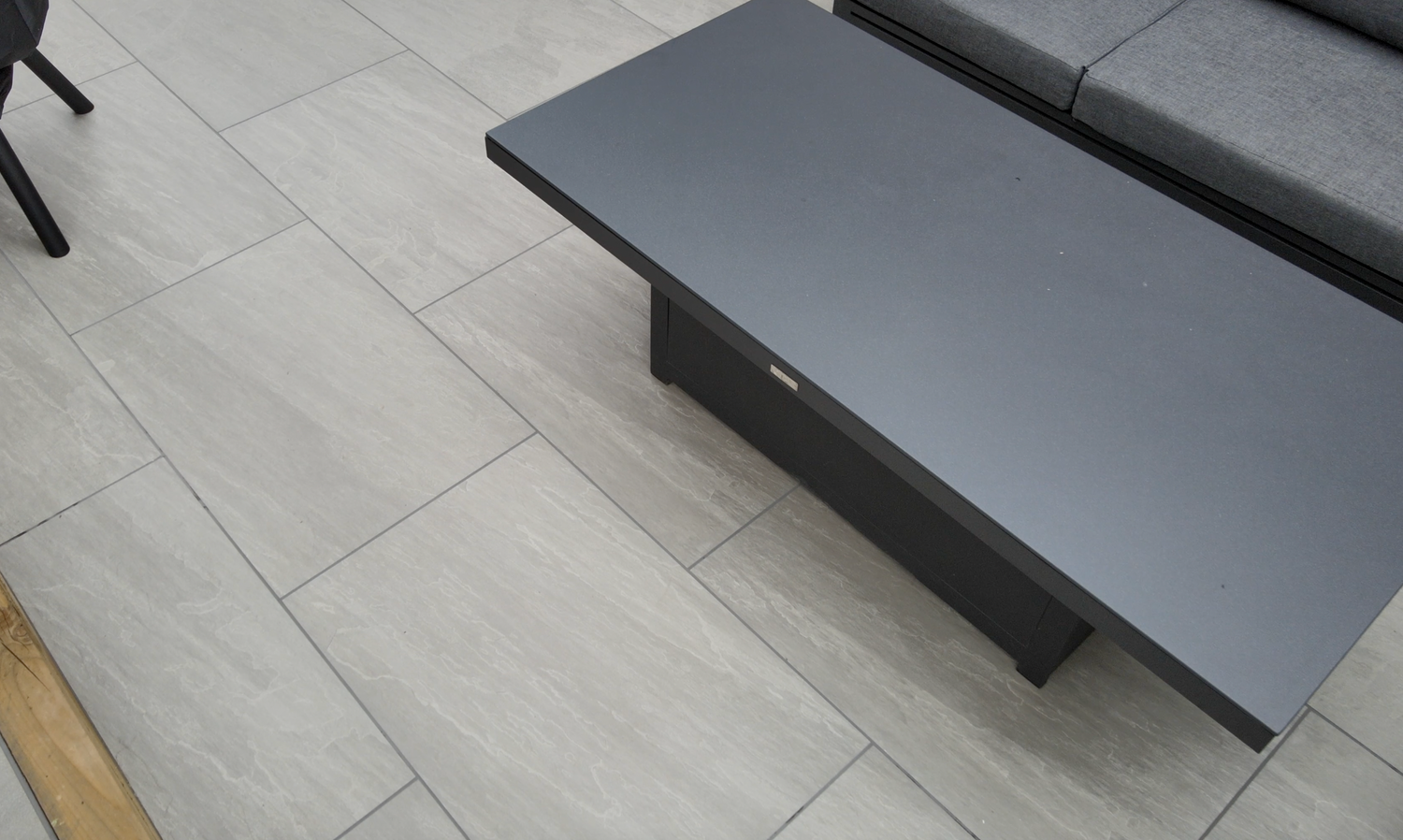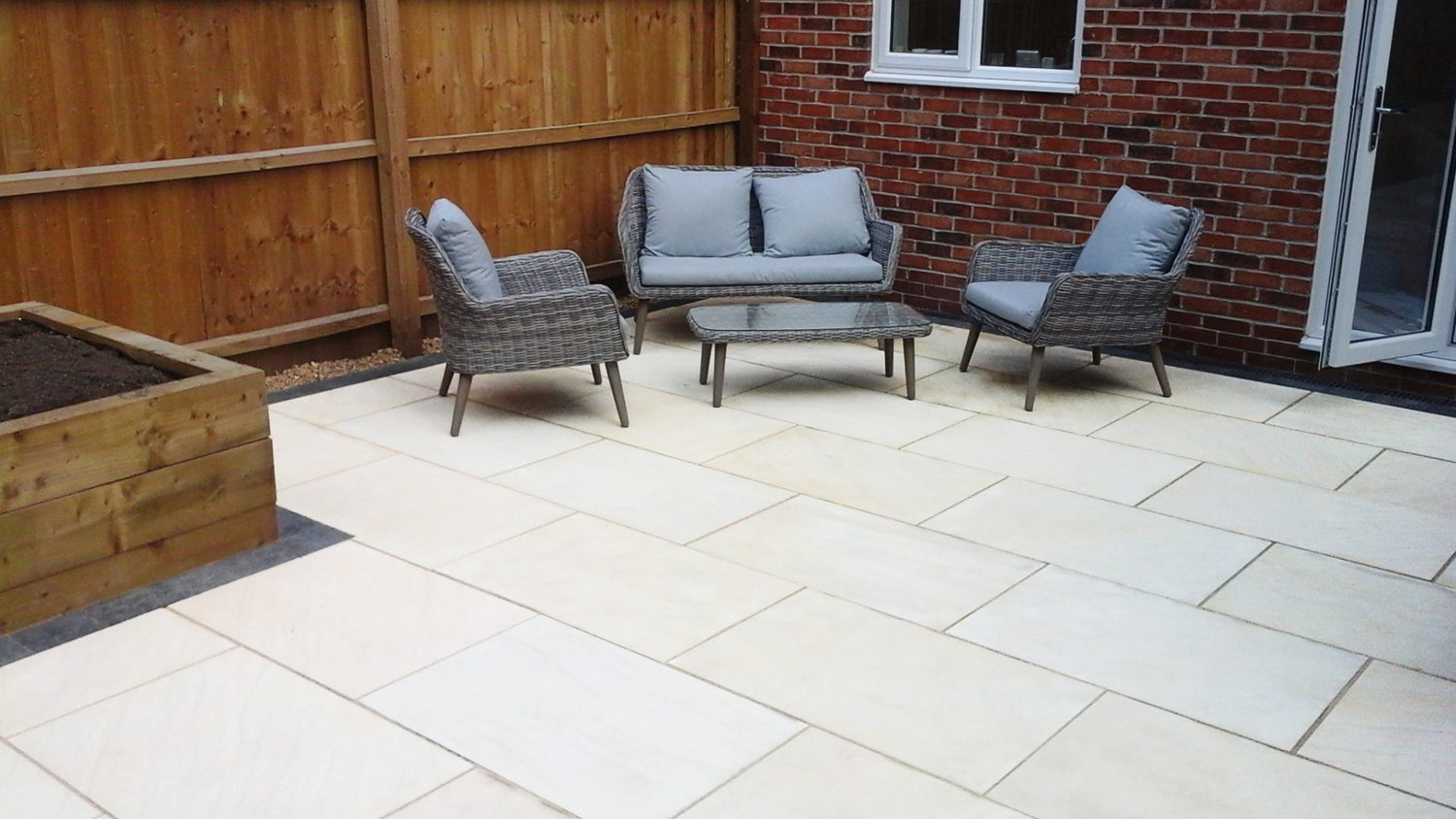
How to lay paving in winter (Tips & Tricks)
Share
How Cold Temperatures Impact Paving Projects
The primary concern when working in cold weather is ensuring proper curing of cement-based products. As temperatures drop, the chemical reactions that cause bedding mortars and jointing compounds to set and harden slow down dramatically. Brief dips below freezing can damage mortar in its early curing stages. Consistent sub-zero temperatures often prevent concrete and mortar from ever fully curing, resulting in a weak, unstable finished product.Why Rain and Snowfall Create Problems
Heavy or sustained rain or snowfall causes issues as well. Backfill soil can quickly become oversaturated, meaning bedding materials laid on top will not properly adhere or drain. The cement content in mortar is also easily washed away by heavy rains or excessive moisture, severely reducing its bonding strength. Any pavers laid on saturated, shifting soil or weak mortar are liable to settle or crack over time. It is highly advisable to avoid laying paving during heavy precipitation.How to Combat Issues from Frost and Freezing
Frost, however brief, can wreak havoc on freshly laid pavers as well. As thawed ground expands and contracts, it often loosens properly-laid pavements. Bedding mortar subjected to consistent freeze-thaw cycles while curing also tends to fail prematurely. The simplest solution is laying tarps, insulation blankets, or frost covers over freshly set paving each evening until initial curing is complete. This guarantees winter frosts do not penetrate the critical lower layers of your project.Key Tips for Laying Paving in Winter Months
Monitor Weather Consistently
Check short and long term weather forecasts at least daily when planning a winter paving project. Hourly forecasts give critical insights on impending rain, snow or sustained freezing temperatures so materials and unfinished work can be swiftly protected or the job safely rescheduled if severe conditions arise.
Vigilantly Protect Against Moisture
It takes extra diligence to keep sand, gravel, cement and paving materials shielded from winter moisture. Designate sheltered storage areas under cover before delivery or pull supplies outdoors only when needed. Waterproof tarp overlays should cloak staged materials and unfinished work whenever stopped for break or at day's end. Preventing water saturated soil and supplies saves endless issues down the road.
Counter Cement Setting Delays with Admixtures
Specialized anti-freeze and accelerating liquid admixtures counteract delayed setting from cold when added to concrete and mortar. Though pricier, using these can make winter paving feasible. Conduct small batch mix tests to gauge set times based on temperatures. Take precise measurements as excessive amounts risk cracking and instability too.
Insulate for Gradual Cement Curing
Rather than leaving freshly laid paving exposed to harsh overnight frost and plummeting temperatures, provide insulation blankets carefully tucked around the outer edges or set polyethylene sheeting, plywood or old carpet atop the surface. This guarantees stabilized incremental cement hydration, yielding properly cured, durable bedding and joints.Does porcelain paving crack in winter?
No, porcelain pavers are less prone to cracking in winter than concrete or natural stone since they have high flexural strength. Still take measures to prevent freeze/thaw shifting.Does limestone paving crack in winter?
Limestone is susceptible to cracking from frost exposure before it fully cures. Insulating for gradual curing is highly recommended for winter limestone paving projects.Does sandstone paving crack in winter?
Sandstone slabs have naturally high fracture toughness. However, consistent insulating for gradual curing protects it from rapid winter temperature changes while mortar and concrete set.How to protect paving in winter?
While it isn't necessary to protect paving in winter, covering freshly laid paving overnight with insulation blankets, polyethylene sheeting, plywood helps to protect from frost. Store materials under waterproof coverings.Can you block pave in winter?
Related Posts
-

Inside‑Out Living & Patios: Inspired by George Clarke’s Kitchen vs Garden
Inside‑Out Living & Patios: Inspired by George Clarke’s Kitchen vs Garden Why Inside‑Out Living Is Having a M...
-

The Mental Health Benefits of Creating an Outdoor Living Area & Patio
The Mental Health Benefits of Creating an Outdoor Living Area & Patio Discover how an outdoor living area or pat...
-

How Indian Sandstone is Mined: From Quarry to Your Garden
How Indian Sandstone is Mined: From Quarry to Your Garden Indian sandstone is a popular natural stone used across the...
-

The Ultimate Guide to Porcelain Grout: Perfect for Paving, Walling & Cladding
The Ultimate Guide to Porcelain Grout: Perfect for Paving, Walling & Cladding Porcelain tiles and slabs are rapid...
-

Transform Your Garden with a Standalone Water Feature: Benefits & Maintenance Tips
Transform Your Garden with a Standalone Water Feature: Benefits & Maintenance Tips Looking to add a touch of tran...
-

RHS Flower Shows 2025: Your Complete Guide
🌸 RHS Flower Shows 2025: Your Complete Guide The Royal Horticultural Society continues to wow visitors with its premi...
-

What to Consider When Choosing a Professional Landscaper for Your Perfect Outdoor Living Space
Title: What to Consider When Choosing a Professional Landscaper for Your Perfect Outdoor Living Space When it comes t...
-

Transform Your Outdoor Space with Porcelain Walling Cladding | Paving Shopper
Transform Your Outdoor Space with Porcelain Walling Cladding | Paving Shopper Are you looking to enhance your garden ...
-

Natural Sandstone Paving: Styles, Colours & Features for 2025 Garden Projects
🪨 Natural Sandstone Paving: Styles, Colours & Features for 2025 Garden Projects Meta description:Discover the tim...
-

Natural Sandstone Paving: Styles, Features & Why It Remains a Timeless Choice
🪨 Natural Sandstone Paving: Styles, Features & Why It Remains a Timeless Choice When it comes to paving that deli...
-

Top Landscaping Trends and Styles in 2025: What’s Hot in Outdoor Design
🌿 Top Landscaping Trends and Styles in 2025: What’s Hot in Outdoor Design As we move through 2025, the world of lands...
-

Why Composite Decking is a Smart Investment for Your Outdoor Space
Why Composite Decking is a Smart Investment for Your Outdoor Space When it comes to creating the perfect outdoor livi...
-

Why Choosing the Right Garden Designer is Crucial for Transforming Your Outdoor Space
Why Choosing the Right Garden Designer is Crucial for Transforming Your Outdoor Space When it comes to turning your g...
-

Kandla Grey Sandstone: The Timeless Patio Favourite for UK Gardens
Kandla Grey Sandstone: The Timeless Patio Favourite for UK Gardens Looking to transform your outdoor space with a mod...
-

Best Porcelain Paving for UK Gardens: A 2025 Guide
Porcelain paving has become the top choice for homeowners and landscapers across the UK—and for good reason. It’s sty...
-

Pros and Cons of Porcelain Pavers: A Smart Choice for Modern Landscaping
Porcelain pavers are gaining popularity in landscaping projects for their sleek appearance and long-lasting durabilit...
-

UK Garden Statistics and Trends 2024
UK Garden Statistics and Trends 2024 General UK Garden Statistics The vast majority of UK households have access to ...
-

Can I lay Paving on Soil or Mud?
Technically, yes – you can lay paving stones or slabs directly onto exposed topsoil however, laying a sub-base will e...
-

How Much Does a New Patio Cost?
A new patio in the UK typically costs between £80-£150 per square meter. For a 40-50 sqm patio, expect to pay £2,000-...
-

What Different Sizes Do Paving Slabs Come In?
When planning a patio or outdoor paving project, one of the key decisions is choosing the right size paving slabs. ...
-

Can You Pressure Wash Indian Sandstone?
Indian sandstone is a popular choice for outdoor paving due to its durability and attractive appearance. However, li...
-

Is Sandstone Paving Permeable? Is it porous?
Sandstone's porous nature enables it to absorb rainfall, qualifying it as a permeable paving variety. However, seali...
-

Where Does Natural Sandstone Paving Come From?
Sandstone begins deep underground, formed over eras as minerals and sediments fused under pressure. Powerful forces ...
-

5 Paving Ideas for Small Gardens: Maximise Your Outdoor Space
Front of House When considering paving ideas for the front of your house, it's crucial to select ones that complem...
-

9 Paving Ideas for Front of House: Enhancing Curb Appeal with Style
The facade of a house plays a pivotal role in defining its character and curb appeal, and the choice of paving can s...
-

9 Summer Garden Paving Ideas UK
Summer gardens offer a vibrant canvas for homeowners to express their style while enhancing outdoor living spaces. G...
-

8 Garden Paving Ideas for 2024
It's time to refresh your garden's look for 2024 and an easy way to do that is with some new paving. With so many opt...
-

How to remove moss from patio paving
Moss growth is a common issue for patio paving, especially in damp, shaded areas. While moss may seem harmless, it ca...
-

How much does sandstone paving cost?
When choosing new garden pavers, sandstone offers homeowners an enticing middle-ground - more durable than basic conc...
-

Why Do Paving Slabs Crack And How To Repair Them
Seeing cracks appear on your patio or driveway can be disheartening after investing time and money into installing be...
-

Sub Bases For Patios
Building the Perfect Patio Base: A Comprehensive Guide When planning an outdoor living space, understanding proper ba...
-

Pros and Cons of Porcelain Paving
Are you considering adding porcelain paving to your outdoor space? It's important to weigh the pros and cons before ...
-

Understanding Paving Slip Ratings: A Comprehensive Guide
A paving slip rating, also known as a slip resistance or anti-slip rating, is a measure of how slippery a surface...
-

Stunning Garden Water Feature Ideas - Enhance Your Outdoor Space
Garden water features are decorative elements that incorporate water into a garden, adding beauty and a sense of ...
-

How to Stop Weeds in Block Paving: Expert Tips andTricks
Weeds growing between the blocks of your paving can be an unsightly and frustrating problem. Not only do they make y...
-

How to clean paving without a pressure washer
A patio cleaner is a cleaning solution designed specifically for removing dirt, grime, and stains from outdoor patio...
-

How to Grout Paving Slabs – Expert Tips and Techniques
Pointing paving slabs is an important step in the process of installing them. Grout is a mixture of cement, water...
-

Block Paving Guide | What Does it Cost? | How Much Per m2?
Block paving is a versatile and durable option for creating driveways, patios, and paths. This method involves using...
-

Porcelain VS Ceramic Paving
Porcelain paving is non-porous and more durable than ceramic paving, which is more porous and prone to stains and wea...
-

Sandstone V Porcelain Paving - (Style Comparison and Distinctions)
When choosing materials for your patio or driveway, two of the most popular options are sandstone paving slabs and p...
-

Understanding Gradients and Falls for Paving and Drainage (2024)
When it comes to paving and drainage projects, understanding the correct gradients and falls is essential for ensuri...
-

Indian Sandstone Paving Colours for A Patio - A Comprehensive Guide
Indian sandstone is one of the most popular paving materials, celebrated for its natural beauty and the variety of co...
-

Jointing and Pointing For Paving (Sand & Cement Mix)
Patio pointing is important for both looks and durability. It protects the layers under your paving, stops weeds, and...
-

How to Lay Paving on Sand and Cement: Expert Advice and Tips
Paving on Sand and Cement: A Comprehensive Guide When it comes to enhancing your outdoor space, paving is a popular ...
-

Pros and Cons of Sandstone Paving
Pros & Cons of Indian Sandstone Paving Indian sandstone paving is a natural and durable option that adds both bea...
-
Does Patio Paving Need Edging? A Comprehensive Guide
In this article, we'll explore the importance of patio edging, the different types of edging materials available, and...
-

Pet Friendly Paving - What is the best paving for a dog-friendly garden?
Creating a dog-friendly garden requires choosing the right paving materials to ensure your furry friends can enjoy t...
-

Patio Paving Laying Patterns Guide
Paving patterns can transform an ordinary outdoor space into a stunning and eye-catching area that complements your ...
-

Patio Kits vs Single Size Paving Slabs: Which To Choose?
When designing a patio or outdoor space, one crucial decision is whether to use a patio kit (also known as patio pack...





















































